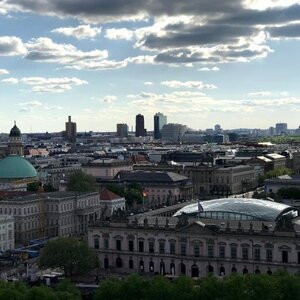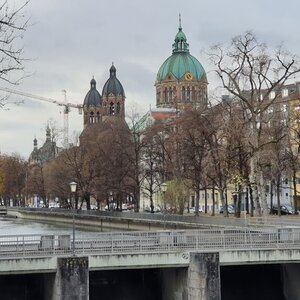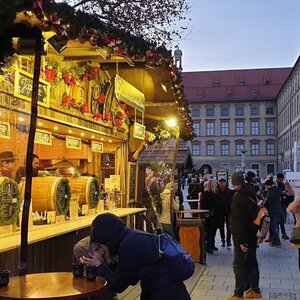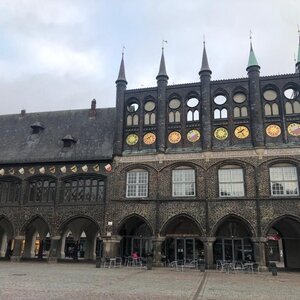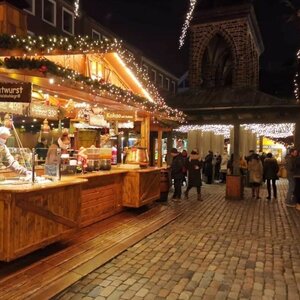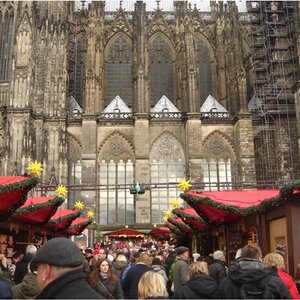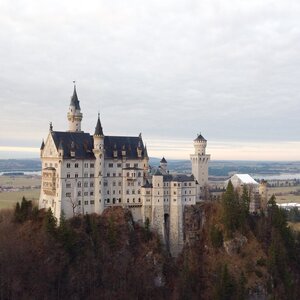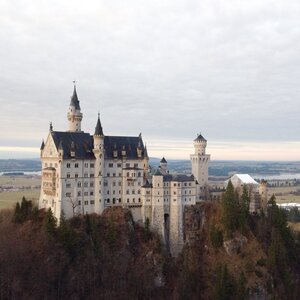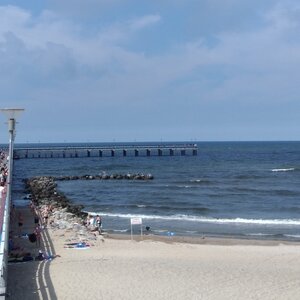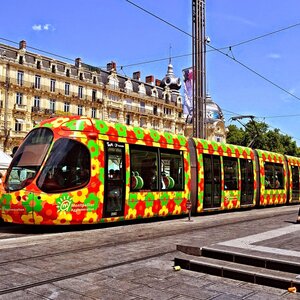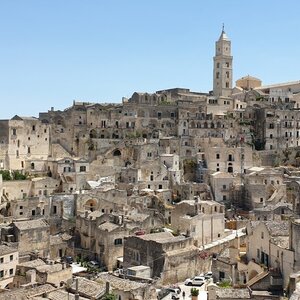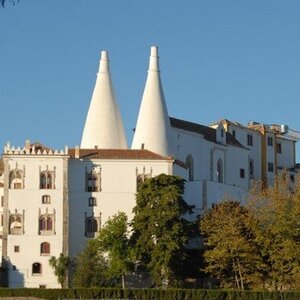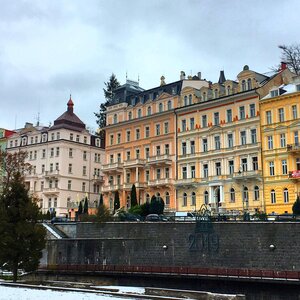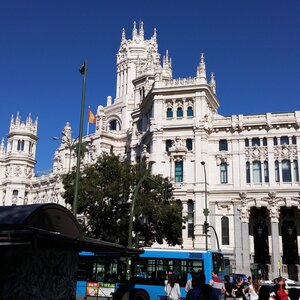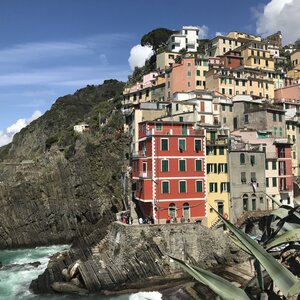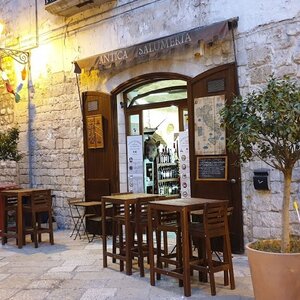There were settlements on the site of the present town as early as the ninth century, but the first mentions in documents date back to 1050. At that time, Nuorenberk was an important center of the Holy Roman Empire and was directly subordinate to the emperor. It was considered the unofficial capital of the empire, because the parliament (Reichstag) and the court sat in Nuremberg Castle. Since the XIII century Nuremberg was granted the status of a free imperial city, the right to mint money and its own tax policy. Finally, key trade routes passed through Nuremberg. And where wealth and power — there is beauty, science and art. In Nuremberg lived and created great artists, scientists, architects, it became the center of Renaissance art in Germany. The first German trains in history departed from here, the annual congresses of the NSDP and the later Nuremberg Trials, which condemned the crimes of World War II, were held here.
Nuremberg was almost completely destroyed at the end of the war, but the most important architectural structures were later rebuilt and the city managed to regain its medieval uniqueness. The novelty of most of the buildings is obvious even to the uninitiated, but they have been recreated with such meticulousness and precision that it is not difficult to use your imagination and imagine horse-drawn carriages instead of cars, and ladies and gentlemen in long cloaks instead of tourists in shorts.
Imperial Castle Kaiserburg (Kaiserburg)
On a rocky hill above the old town stands the castle, one of Nuremberg’s most important monuments and a constant reminder of the city’s former power. In this political center of the Holy Roman Empire, every newly elected monarch held his first meeting.

The castle was badly damaged during the bombing raids and, despite restoration, its interiors do not have their former splendor. But the monument hides a precious treasure of Romanesque architecture — a two-storey chapel built around 1200. The second floor was intended for the monarch, where he could pass directly from his chambers. Entrance to the castle courtyard and the terrace by the walls is free of charge.
- The castle is open from April to September: daily from 9:00 to 18:00. October to March: daily from 10:00 to 16:00.
- Admission for adults is 7 €, children under 18 years old are free.
- Museum website




Albrecht Dürer House (Albrecht-Dürer-Haus)
Nuremberg is inextricably linked with the figure of the Renaissance painter Albrecht Dürer, who was born and lived here. In the immediate vicinity of Nuremberg Castle stands the house where he spent the last 19 years of his life (1509 — 1528). The building survived the military upheavals. Its upper part is decorated with a characteristic half-timbered construction.
In 1828, the monument was turned into a museum dedicated to the artist and renamed the Albrecht-Dürer-Haus, or Albrecht Dürer House. The interior has not retained its original decoration, but the kitchen, bedroom and workshop have been recreated using authentic furniture of the time.
The museum has a room with copies of the artist’s works made by local painters. The originals are exhibited in Munich and famous European museums, and the location of the original is indicated under each painting.
- The museum is open Tuesday through Friday from 9:00 am to 5:00 pm and weekends from 10:00 am to 6:00 pm.
- Admission for adults is 7,5 €.
- Museum website

Germanisches Nationalmuseum (German National Museum)
It is one of the most important and largest museums in Germany. At least two hours should be allocated for a visit. Here you can see, for example, the oldest globe in the world, the Codex Aureus golden book — a numismatic album with a collection of Roman coins, works by Rembrandt, Albrecht Dürer and other great artists.
In front of the entrance to the museum there is an installation called «Human Rights Street»: 27 columns 9 meters high, located along the sidewalk. Each column is engraved with one of the articles of the Declaration of Human Rights in different languages.
- Opening hours: Tuesday through Sunday 10:00 — 18:00. Day off: Monday.
- Admission is 10 €.
- Museum website
Nuremberg Railway Museum (DB Museum)
The museum is dedicated to the history of German railroads and communications. It houses a collection of historic locomotives and depots (including King Ludwig II’s wagon, Otto von Bismarck’s cars).
The National Railway Museum is located in Nuremberg because it was here that Germany’s first steam railroad was opened in 1835. The wagons were not always pulled by a locomotive — in case of a shortage of coal, it was sometimes replaced by horses.
- The museum is open Tuesday through Friday from 9:00 to 17:00. Saturday, Sunday, holidays — from 10:00 to 18:00. Monday is a day off.
- Admission for adults 9 €, children from 6 to 17 years old 5 €, children under 6 years old are free.
- Museum website
Church of Our Lady (Frauenkirche)
The Catholic Church of the Virgin Mary was built at the same time as the Main Market Square on the site of the former Jewish quarter after the expulsion of the Jews during the plague of 1349. In this 14th-century church you can see Nuremberg’s oldest stained glass windows. And on the pediment of the Maennleinlaufen clock, every day at 12:00 sharp, under the ringing of bells, a performance of figures begins: 7 Electors go around the figure of the Emperor three times and swear allegiance to him, which symbolizes the Golden Bull of 1356 — the constitution of the Holy Roman Empire.
- The church is open Monday through Saturday from 10:00 am to 5:30 pm, Sunday from 1:00 pm to 5:30 pm. Closed due to renovation work until approximately February 2024.
- Admission is free.
- Website

In the same square, you will see an unusual pyramid that looks like a church spire, but standing on the ground. This is what it is: the Gothic spire was intended for a church, but either it turned out to be too heavy or too beautiful, but they decided to turn it into a fountain. Although there is no water in it, the pyramid is called Schöne Brunnen — «beautiful fountain».
The main attraction of the spire is the gold ring embedded in the monograms of the lattice. It is seamless and is believed to grant wishes.

St. Sebald Church (St. Sebald, Sebalduskirche)
Nuremberg’s oldest parish church is located opposite the old city hall and is dedicated to St. Sebald, the patron saint of the city. The interior of the Lutheran church hides many valuable monuments.
One of the greatest works of art in Nuremberg is the magnificent bronze tomb made by Peter Wischer and his sons. This tomb contains the remains of St. Sebald, the patron saint of the city, placed in a gilded ark. The church preserves works of medieval art: reliefs, tombstones, statues and altars.
Among other artifacts, there is an anti-Semitic bas-relief on the wall of the church depicting 4 Jews in the company of a pig: two suckling it like piglets, one feeding it and another collecting its feces. It is one of several anti-Semitic images in the church, the most vivid and demeaning. For this anti-Semitism of the medieval masters, the church council of St. Sebald’s has apologized relentlessly, but the bas-relief remains in the church as a reminder of the vestiges and mistakes of the past.
- The church is open January through March from 9:30 a.m. to 4 p.m. and April through December from 9:30 a.m. to 6 p.m.
- Admission is free.
- Website










St. Lawrence Church (Lorenzkirche)
The Lutheran Church of St. Lorenz (Lawrence) is one of the three most important churches in Nuremberg, along with St. Sebald and Frauenkirche. The three-part organ in the Lorenzkirche is one of the largest in the world, and the oldest of its 16 bells was cast in the 14th century.
St. Lorenz Church is unique in that it is the city’s only complete High Gothic church. The Reformation came to Nuremberg peacefully, without iconoclasm, so the church has preserved works of pre-Protestant art: the Annunciation by Feit Stoss (1518), Adam Kraft’s gift guardian (1496), medieval altars, plaques and stained glass windows. The building survived World War II bombing despite the collapse of the roof and internal structures.
- Open for visits: Monday through Saturday from 9:00 am to 5:30 pm and Sunday from 1:00 pm to 3:30 pm. On holidays, visiting hours end at 15:30.
- Admission is free.
- The church’s website



Palace of Justice (Justizpalast) — the site of the Nuremberg Trials
Nuremberg was extremely important to the Holy Roman Empire — and therefore the Nazis chose it as the main city for their Nazi parades. Their trial also took place in a symbolic place — the Palace of Justice, where their congresses were regularly held. Courtroom 600, where the hearings took place, is open to the public, as well as an exhibition on Nazi crimes.
The main trial began in the Palace of Justice on November 20, 1945, with 21 defendants, including Hermann Goering and Rudolf Hess, sitting in the dock. The exhibition tells about the course of the trial, and the materials include recordings of the court sessions.
- Mode of operation: Wednesday, Thursday, Friday, Monday — 9:00 — 18:00, Saturday, Sunday — 9:00 — 18:00, Tuesday — day off.
- Admission for adults is €7.50.
- Website
Underground Nuremberg: beer cellars (Historische Felsengänge)
In the Middle Ages, multi-level underground halls connected by tunnels were dug directly under the streets of the old town and used to store beer. The earliest mention of these warehouses dates back to around 1380. They were used as shelters during the war.
Beneath Nuremberg Castle was a complex of underground bunkers, equipped with a sophisticated air-conditioning system, where works of art captured during the war were stored.
The tour starts at the Albrecht Dürer monument and ends near the Hausbrauerei Altstadthof brewery, where the local red beer is brewed. The tour covers the production and storage of traditional red beer as well as the history of the city.
- Tours are offered every day from 11:00 a.m. to 5:00 p.m., Saturdays, Sundays and holidays from 10:00 a.m. to 5:00 p.m.
- Cost: adults from 17 years old — 12 €
- Website
The Town Hall and its dungeons
The Town Hall, located next to the Market Square, has been enlarged several times. The oldest, Gothic part was built in the middle of the 14th century. In the 17th century, the Town Hall was rebuilt on the model of Italian Renaissance palaces.
The medieval dungeons beneath the town hall and the cells where prisoners were held while awaiting trial or execution can be seen on a guided tour lasting about 40 minutes.
- Tours are held daily from 11:00 to 18:00
- Cost: adults — 8 €.
- Website
Weißgerbergasse (half-timbered street)
This small street is a special place to see the old half-timbered buildings. Some of them are original medieval houses, while others are the result of careful reconstruction.


Crafts Village (Handwerkerhof)
Another location of concentrated half-timbering is the «Medieval Village» near the Main Railway Station, under the walls of the former arsenal. This is a block of several houses decorated in the half-timbered style, which now houses craftsmen’s shops and restaurants. The quarter is deliberately cute and therefore not very authentic, but it is useful for photos in a medieval setting.

Bridges over the Pegnitz River
The Pegnitz River runs through the entire city. It is lined with embankments and the Pegnitz River itself is crossed by bridges that have been part of Nuremberg’s landscape since medieval times. You can start your walk from the Wöhrder Wiese subway station and follow the river to the city walls.
One of the sights on the Pegnitz River is the Hospital of the Holy Spirit (Heilig-Geist-Spital), built in 1331 to help the elderly and sick. The building is now a home for the elderly.


The most interesting bridges over the Pegnitz River:
- The Maximilian Bridge (Maxbrücke) is the oldest stone bridge in Nuremberg, crossing the river near the former Weinstadel, which offers a beautiful view of Pegnitz. The bridge was named in honor of King Maximilian I.
- Karlsbrücke is a complex of two bridges (north and south) connecting both parts of the Old Town with the island of Trödelmarkt, which means «Flea Market».
- The Meat Bridge (Fleischbrücke) is a 1596 Renaissance bridge modeled after the Venetian Rialto Bridge. The Nuremberg Bridge takes its name from the nearby slaughterhouse.
- Executioner’s Bridge (Henkersteg Bridge) — in the XVI–XIX centuries was intended for secret passage of executioners who lived in a tower outside the city. Close friends of the condemned came to this bridge to persuade the executioner to reduce the suffering of those condemned to death.
- Chain footbridge (Kettensteg) — built in 1824. It is the first chain pedestrian bridge in Germany. Its peculiarity is that the bridge swings when you cross it.





The city walls of Nuremberg
The center of Nuremberg is surrounded by a dense ring of city walls stretching for more than 4 kilometers. Of the original 88 defense towers, 71 have survived to this day.
Along the city walls there are walking areas. You can stroll through the Handwerkerhof (Craftsmen’s Court) and walk to the castle by crossing the Pegnitz River.
Inside the Tower of the Senses (Turm der Sinne) is a museum dedicated to science and technology. Its theme is the functioning of the human senses. There is no other museum like it anywhere else in the world.



Nuremberg Card
If you’re staying in the city center, you won’t need public transportation — the entire center of Pegnitz is accessible on foot. However, if you are coming for a few days, or if you are not staying in the center, or if you plan to visit museums, you may find the NÜRNBERG CARD + FÜRTH city tourist card useful. For 2 days it gives you free public transportation and admission (free or heavily discounted) to most museums, historic buildings and attractions. The card costs 33 € and can be purchased at the airport, at the tourist information desk, at the reception desks of some hotels or ordered at .

Where to stay in Nuremberg
It is worth booking hotels in advance if you plan to come to Nuremberg in June (it is the time of the local equivalent of Oktoberfest — beer festival), October (various exhibitions take place in this month), December (Christmas fair) and March (carnival time). In the central part of the city, most hotels do not have their own parking lots.
The most tourist-friendly areas are the Old Town (Altstadt) or the surrounding neighborhoods.
- Leonardo Royal Hotel Nürnberg 4* — hotel near the very center of Nuremberg. A room for two persons costs from 113 €.
- NOVINA HOTEL Wöhrdersee Nuremberg City 4* — hotel is located near the Royal Gate, 1,5 km from Frauenkirche. Room for two persons from 163 €.
- Sorat Hotel Saxx Nuremberg 3* — hotel near Frauenkirche. Room for two persons from 127 €.




